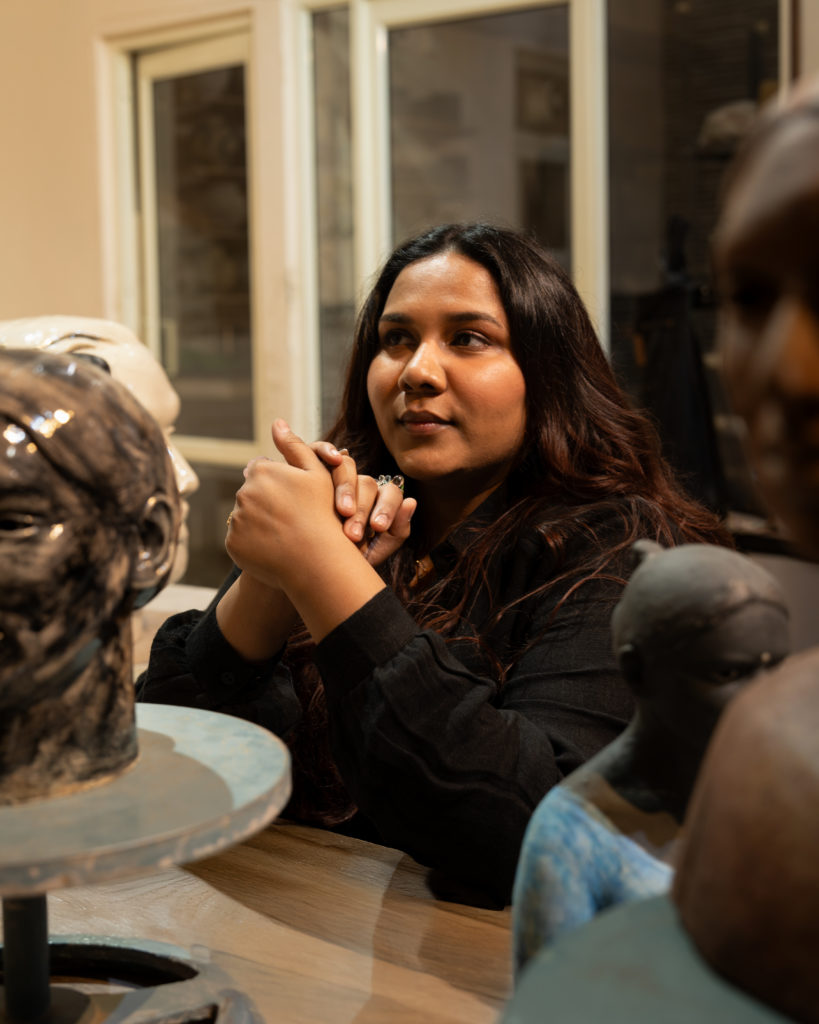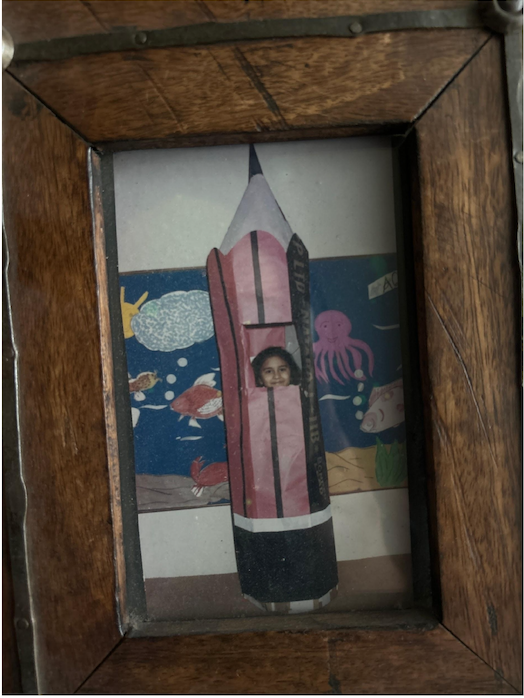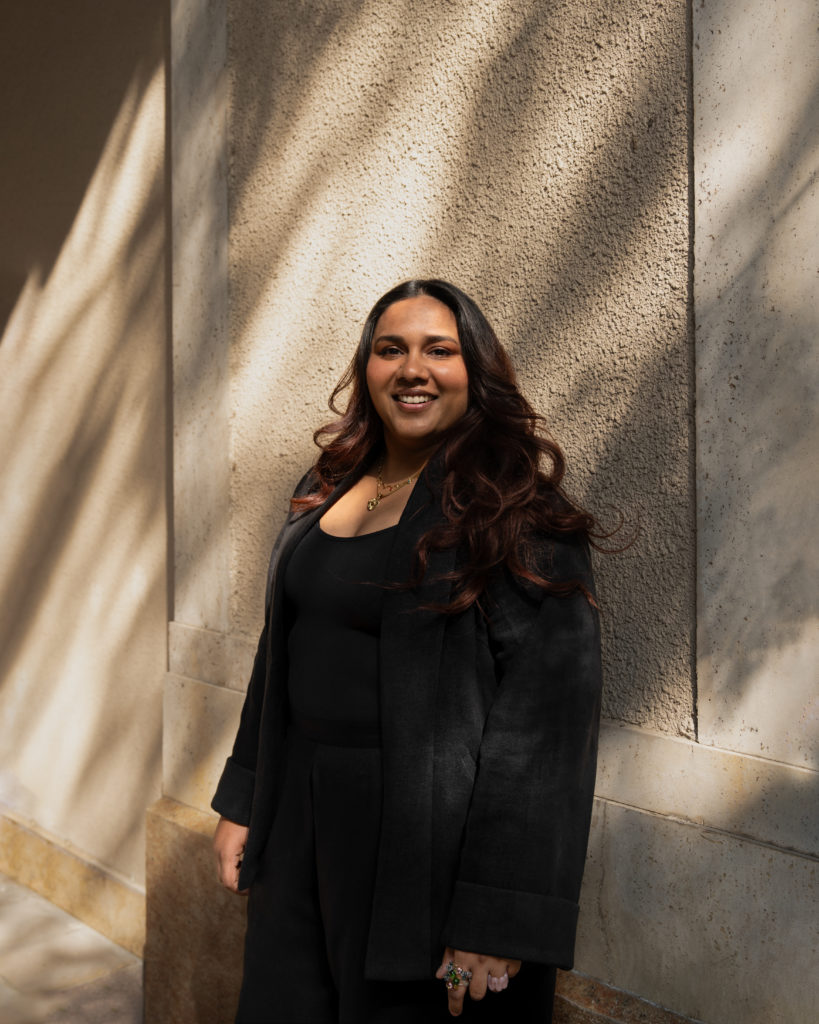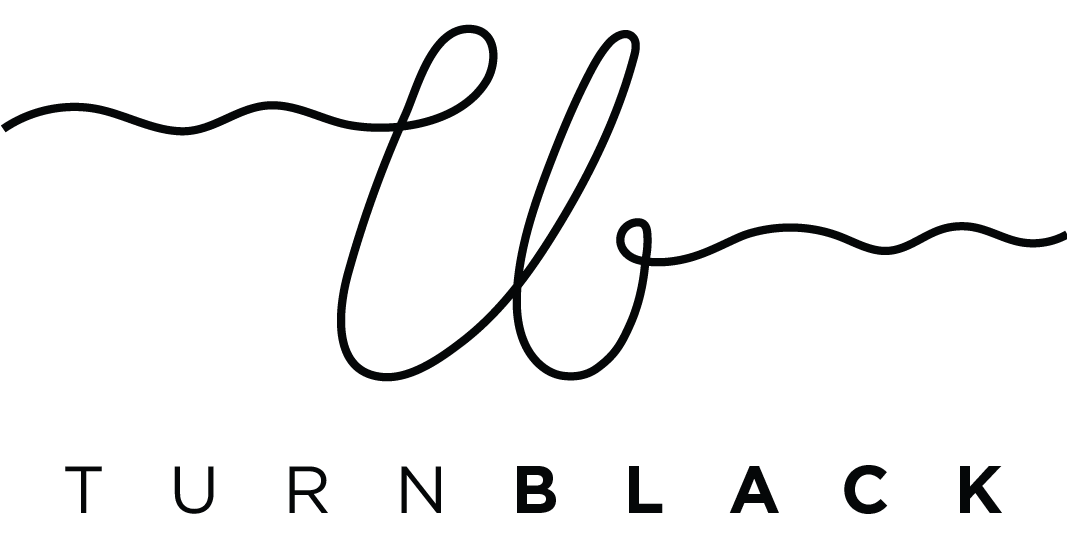TURN BLACK X STUTI JAIN
We spent an afternoon with Stuti in her Gurgaon based studio, talking sculpture, art and identity.
Stuti Jain, a Delhi NCR-based artist, weaves her experiences, heritage, and deep artistic inquiry into her sculptural practice. With a Master’s in Sculpture from Maharaja Sayajirao University of Baroda and international training in Spain, her work explores themes of identity, transformation, and the interplay between permanence and impermanence. Influenced by Odissi dance and Hindustani Classical music, her figurative ceramic sculptures embody rhythm, culture, and catharsis. Recognized with prestigious awards, including the National Gold Grant by the Prafulla Dahanukar Foundation and the Mrinalini Mukherjee Artist Grant. Stuti has exhibited widely, from the Kochi Students Biennale to Jehangir Art Gallery and the Dhoomimal Art Gallery. For her, sculpting is both an act of rebellion against passive ignorance and a celebration of human existence—an exercise in keen observation and deliberate creation.

Could you tell us a little about yourself? What’s been a guiding factor for you?
I’m Stuti and I’m a sculptor. I’ve always been into arts and crafts for as long as I can remember. I had Fine arts as a subject in 10th-12th and made my first bronze and fiberglass sculptures in school. I then decided to pursue it professionally for BFA at the Maharaja Sayajirao University in Baroda, Gujarat. In second year I was awarded a merit fellowship to study in Spain and it was life changing for me. I think that’s where I saw figurative ceramics being made for the first time. I studied further for my Masters at the same university. It was a total of 6 years of training and learning and I now work from my studio in Gurgaon. The biggest guiding factor for me through this has been my family. I’ve grown up seeing them working very hard and it was always important to me that I justify any talent I have with working hard on it and honing it. Also being able to express thoughts in a three dimensional way has been such an incredible experience.
How do you build upon your art? What is your inspiration?
I love preserving things, emotions and feelings with people. I love being very nostalgic and very reminiscent kind of a phase. So when I was a kid and we used to travel a lot. Thankfully, fortunately I have been blessed with a very good exposure to museums and art and sculptures since I was a kid. I used to always think that it’s completely insane that you can experience something and then have that in a physical form in front of you forever. I once watched a Cirque du Soleil show, and as I exited the venue, I stepped into a sculpture gallery by Ronald McDonald. That was the first time I was completely blown away by the experience—having just witnessed acrobats performing breathtaking feats, I suddenly found myself surrounded by sculptures capturing those very moments. There they were, frozen in time—suspended in the air, holding their props, just as they had been on stage. It was mesmerizing to see how a fleeting performance could be locked into permanence through sculpture. Since then, sculpture has meant more to me than just an art form; it has become a way of preserving something far beyond our own existence.
The materials I work with—metal and ceramic—carry this sense of longevity. We can still see the Terracotta Army from ancient China, after all. In that way, sculpture is a conversation with the future, an archive that endures. That permanence, that stability—is deeply compelling to me. This is why the physical act of making is so important in my practice. Working with my hands, especially with clay, means that even my fingerprints are preserved in the material. It’s a tangible connection, a way of leaving something behind. I also find great meaning in rejecting ignorance through my work. When sculpting a person’s face or studying for a figurative piece, you develop an intimate understanding of them—often without their knowledge. Over time, I’ve come to notice things like how the distance between a person’s eyes is the same as the length of their ear. It’s such an odd yet beautiful thing to know, something perhaps only a parent or a lover would recognize. I study faces, observing details others often overlook. I love noticing the nuances in everyday things that people don’t pay attention to—that’s where my inspiration comes from.
Conceptually, I’m deeply inspired by people and their relationships—the raw, instinctive aspects of being human. Over time, my focus has shifted towards peeling back layers to understand how we exist, how we connect, and what drives us. These fundamental emotions and instincts influence my work, allowing me to translate them into tangible forms.

Stuti seen wearing the Sairi Jacket, from Perception, A/W ’24 and Persephone Pants from Untamed
Could you describe your style of work and clothing?
I consider my style of clothing as a collage. I like putting together a thoughtful outfit. I love finding interesting pieces at markets or pop ups and then playing around with them with other things from my wardrobe. I especially love when I use garments in a different way than they’re intended or style it in multiple ways, feels like giving life to that piece all over again. It’s about being true to yourself and experimenting, being playful.
Have you felt any obstacles in your career as a young Indian female sculptor? What boundaries have you had to push to establish yourself?
I wouldn’t say anything very specifically from the opportunities point of view as a female sculptor. But definitely sculpture is a very like rough medium. Like a rough field. So I have faced things where you know you’re going to the carriages or you’re getting work done in odd markets. In those situations they do sometimes not take you very seriously. It is fun once you get into it and if you have a team it does help. But the initial stage is like especially in college and when you’re going as youngsters it is a challenge for sure. But opportunities wise it isn’t. Everyone is getting everything. It depends on how much you’re working and where you’re putting your work. So that way it’s good.
Boundaries wise I think have had to push more personal boundaries and luckily with my family they are quite understanding about timings. But I’m sure that people do face things where we have to explain that it’s not a sitting in one room kind of work. You have to go to different places, you will interact with all kinds of people. So for me boundaries have been more personal as in getting out of your shell, talking to people who you might not think initially to talk to or just kind of getting over the discomfort of socialising and things like that.
What are some key influences—artists, experiences, or philosophies—that have shaped your work?
An experience I can’t forget is when my father used to make huge wearable object sculptures for me and my siblings to wear for fancy dress competitions. We would be a school bag, petrol pump, even a Natraj pencil. He’s truly a creative curious person at heart and he’s the one who’s exposed us to museums, art shows, design and such, since childhood. In my personal life I’ve grown up in a Jain home with religious values and I’m quite spiritual myself. I find a lot of solace and understanding of the world in the theory of karma. I’ve gotten this from my grandmother and mother, and it has really shaped who I am as a person and as an artist.
I have this new theory that I’m obessed with right now- that everyone should have hobbies despite their professions. It’s very important to indulge in things purely for the joy of it, I believe strongly in that.

The process of ceramics plays a significant role in your art. You also work a lot regarding identity. How do you see the dynamic nature of this medium reflecting identity formation or dissolution?
Ceramic caught my attention in college because I didn’t need to sand it to death and it preserved my presence as the maker. It’s complex, scientific and always keeps you on your toes. From the first stage to the final glazed piece it’s going through multiple physical and chemical changes, it fits perfectly with how I see things changing and evolving. It’s constantly gaining one identity and losing another.
You are also a Sangeet Prabhakar and have learnt Odissi. How do you feel the Indian arts have influenced your work of sculptures?
Fortunately I have been exposed to the arts since a very young age and it has deeply shaped how I see and experience the world. I’m from a traditional business family and there has always been a respect for the arts amongst us. My maternal grandmother and paternal grandfather are beautiful singers so we all get it from them. I’m the only one pursuing this professionally, we’re all trained in something or the other, like my elder brother writes and composes his own music, my younger sister sings, writes and has studied Korean and other linguistic studies; my younger sisters from my mum’s side are trained Hindustani classical singers, my brothers from father’s side play drums, the tabla.
I trained in Orissi dance for a couple of years in school and it really helped me understand nuances of expression and unspoken dialogue. I use a lot of elements from Sringar Ras like gajras in my work, even the fluidity of the body when I sculpt, I feel, is influenced by my exposure to dance. I loved studying the Rasa theory in college and it really helped to have a background in music and dance. Most creative people I know do multiple things, it’s all connected and I honestly know nothing more profound than art that moves me to tears or joy.
If you could have a conversation with your younger self at the beginning of your artistic journey, what advice or reassurance would you give her?
I would definitely ask her to wait. I would tell her to take life as experiences and not just happenings that are happening to you. Otherwise you kind of miss out on a lot of things and you have to make the most of where you are and what you are doing. You have to be in the moment and enjoy whatever is happening because that time doesn’t come back. So I would definitely tell her to enjoy her life and experience everything and take life as just a collection of experiences. Another thing definitely will be to not be a perfectionist even though it is silly to say that because I know she will be and I also am.
I’d like her to focus on the joy of creating rather than getting caught up in the details or the fear of failure. No one is watching you under a magnifying glass—just be open, trust yourself, and stay curious. That mindset is like a mantra; it helps you navigate anything. Things will break, things will go wrong—it’s inevitable and disheartening, especially when you’ve poured so much into something. Working with materials is like being in a relationship; sometimes, they fail you. I know she’ll go through that, but if I could, I’d just hug her and say, ‘Relax, it’ll all be fine. Keep creating, keep experiencing life—it’s all part of it.’

Stuti is excited to explore a new body of work inspired by the Chola and Khajuraho sculptures—maybe even blending metal and ceramic into it. She’s also setting the stage for some exciting material experiments.


Most amazing Stuti ! Kudos to Turn Black to bring out and showcase this amazing and inspiring narrative